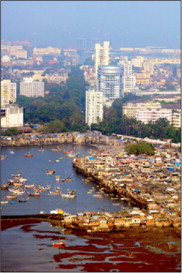J. Appl. Environ. Biol. Sci., 2(7)329-335, 2012
Solid Waste Management in Asian Developing Countries: Challenges and Opportunities
Yeny Dhokhikah, et al.
In developing countries the rapid population, industrialization, urbanization and growth of economic contribute to increasing solid waste (SW) generation. This paper reviews the existing management of SW and the current problem of collection, transportation and disposal processes in Asian developing countries. We provide alternative solutions.
SW generation is between 0.4-1.62 kg/capita/day; the composition of biodegradableorganic waste in is range of 42 to 80.2%. The trend of plastic waste continues to increase. The common problems are: no separation at source, complicated collection processes, open dumped landfills, and no control of gas emissions and leachate in landfills.
Classification of developing countries was based on World Bank criteria. This paper reviewed the existing conditions and current problems of solid waste management (SWM) in Asian developing countries, and find alternative solutions to reduce waste generation. Solid waste management (SWM) was assessed by mean of technical and social approaches. It was found that SWM was country specific, and decentralization is the most appropriate management approach.






